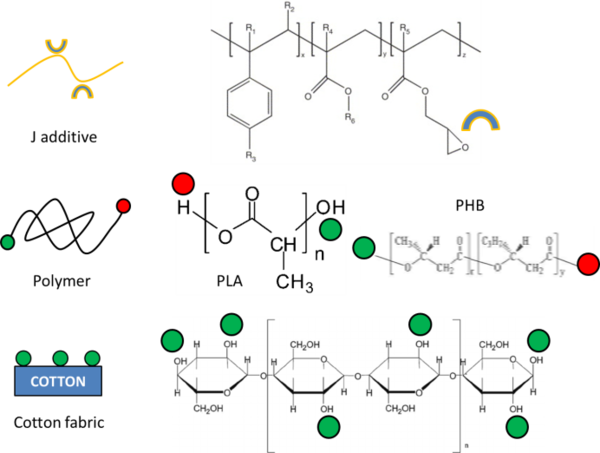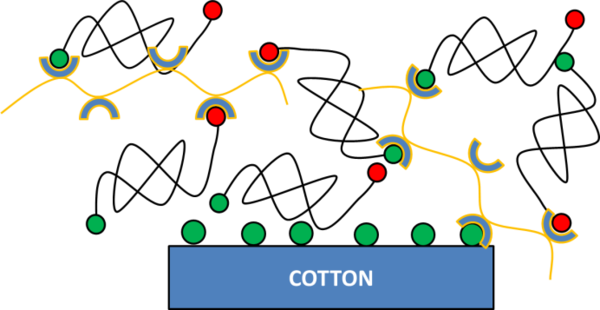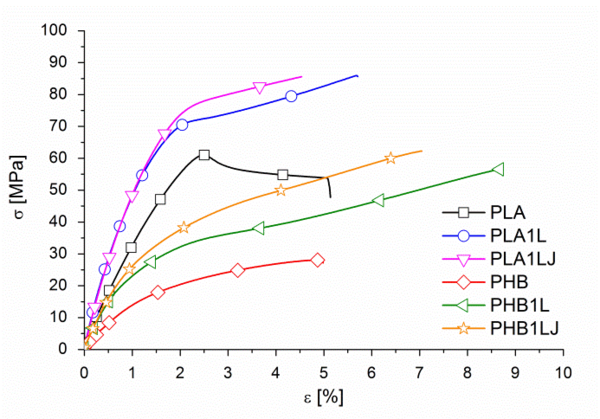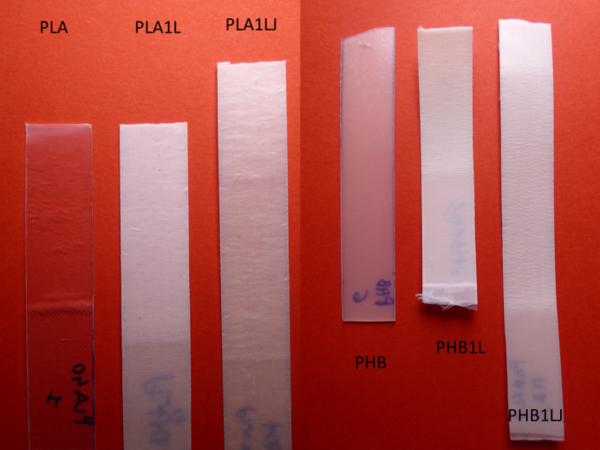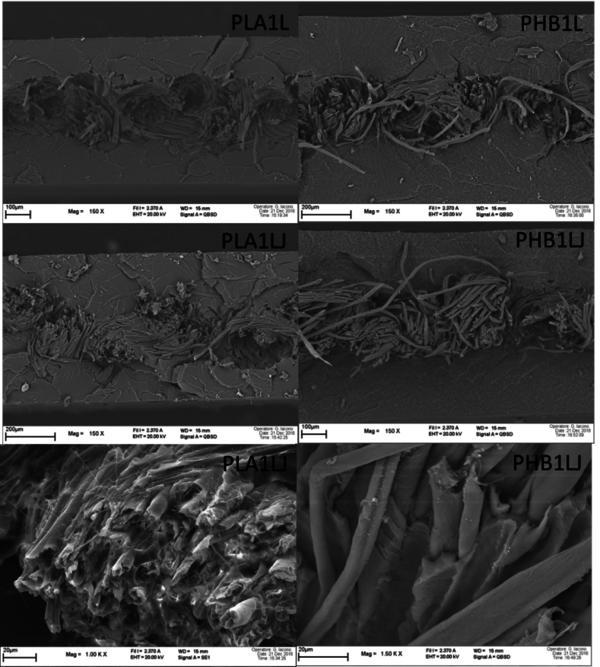1 Introduction
Most of the commercial traditional composites are fossil fuel based synthetic materials such as epoxy, unsaturated polyester, or phenolics being reinforced with synthetic fibers like glass, carbon or aramid. Such thermoset polymers with synthetic fibres have serious drawbacks in terms of their recyclability, notwithstanding the energy consumption, costs and health hazards for the production. The recent discussion about the preservation of natural resources and waste reduction has carried updated interest in renewable raw materials. Thus, the two critical aspects of sustainability and recycling could be achieved by using bio-based thermoplastic matrices in combination with natural fibers. Although, the majority of the research studies in the literature concerned the development of green composites using short natural fibers as discontinuous reinforcement material. The resulting properties of these composites are, however, not as good as if long or continuous fiber would been used. In this latter case, the typical production technique is the film stacking method [1]. Composite panels were produced using this procedure: a dry layer of fabric and two layers of matrix were piled up alternately and compression molded. The materials used in this study were PLA, PHB and cotton twill fabric without any chemical pre-treatment. The density, the fiber and void contents of the prepared composites are then calculated. The mechanical properties of the prepared bio-composites were thoroughly investigated employing tensile tets. These mechanical properties can be improved by optimizing the fiber–matrix interactions by adding adhesion prompters or coupling agents [2] [3]. In this work, an epoxy functional oligomeric acrylic polymer was used. The aim of this work was to study the feasibility to prepare these composites and to analyze the effect of the fabric and the additive on the mechanical properties of the neat PLA or PHB matrix.
2 Materials and methods
2.1 Matrices
Two different bio-polymers were used: Poly(lactic acid) (PLA) (INGEO 3251D grade) purchased from NatureWorks LLC and Poly(3-hydroxybutyrate-co-3-hydroxyhexanoate) (PHB) (AONILEX® X131A grade) purchased from Kaneka Corporation. PLA and PHB pellets were dried at 80°C for 5 h in a ventilated convection oven before the preparation of composites. The density was calculated following the ASTM D792 method on compression molded films. Values of 1.25±0.01 and 1.21±0.01 g/cm³ were found for PLA and PHB, respectively.
2.2 Cotton fabric
Fabric used was cotton twill (165 g/m2) that was cut in square samples (15×15 cm) and dried for 5 h in a ventilated oven at 100°C. No chemical pre-treatment was applied to woven fibers. A density of 1.53±0.03 g/cm³ was calculated following the ASTM D792 method and mediating ten measurements.
2.3 Chain extender
As chain extender an epoxy functional oligomeric acrylic polymer Joncryl ADR-4368 (from BASF Corporation) with the following physical characteristics was used: density = 1.08 g/cm³, Mw = 6800, Tg = 54°C, Epoxy equivalent weight (g/mol) = 285, obtained in flake form. The supplier datasheet reports that Joncryl ADR-4368 (J) reacts quickly at high temperature and its reaction will be over 99% complete if at least 120 sec residence time is provided at 200°C.
2.4 Cotton modification
A mixture of 5g of J and 100 ml of Tetrahydrofuran (THF) (from Sigma-Aldrich) was stirred with magnetic bar at room temperature until it was completely dissolved. The cut fabrics were then immersed in the solution for 5 min then removed and dried. This preliminary operation is assessed to have the J additive directly on the fabric surface.
The epoxy groups of Joncryl can theoretically react with both hydroxyl and carboxyl groups of the polyesters, leading to the formation of branched polymer chains (Figure 1). On the other hand, this agent could also react with the –OH groups in the cellulose structure of the cotton fabric functionalizing the surface or generating bridges between polymers and fabric, acting as coupling agent (Figure 1).
2.5 Composite preparation
First, the dry polymer pellets were placed between two thermoheated plates inside a mold made by aluminum foil of 15×15×0.1 mm3 size. The mold was closed without pressure for 3 min to allow the melting of the polymer, followed by the application of 7 MPa pressure for 2 min at a temperature of 160 and 180°C for PHB and PLA, respectively. After the set heating time, the mold was placed between cold water cooled stages of the hot plate press for 3 min maintaining the same pressure. The cooling rate was previously determined to be approximately –50°C/min. By this way, an approximately 0.2 mm thickness matrix film was obtained.
Then, composites panels were produced using a film-stacking procedure, a dry layer of fabric and two of matrix were piled up alternately. The stacked plies are placed newly between the thermoheated plates in a mold of 15×15×0.5 mm3 size. After the pre-heating time, an increasing pressure was applied and removed several times to minimize the voids generation for 1 min. Finally, 8 MPa was applied for 3 min and the specimens were cooled to room temperature in the cold stage at the same pressure. These parameters have been optimized to assure matrix melting, its homogenous distribution in the laminate and a slowly application of pressure to avoid fiber misalignment.
Final thickness of the one layer composite was between 0.55-0.70 mm and the approximate cotton weight fraction of each composite was 22-25 % as reported in Table 1. The mass fraction has been calculated from the weight of fibres used to produce the laminate and the final laminate weight.
| Sample code | Fabric mass fraction
[wt.%] |
J content a
[wt.%] |
Fabric volume fraction
[vol.%] |
Density measured
[g/cm3] |
Porosityb
[%] |
| PLA | - | - | - | 1.25±0.01 | - |
| PHB | - | - | - | 1.21±0.01 | - |
| PLA1L | 25.4±1.0 | - | 21.7±1.0 | 1.29±0.02 | 2.0±0.5 |
| PLA1LJ | 24.7±0.8 | 2.0 | 21.2±0.8 | 1.30±0.02 | 0.7±0.5 |
| PHB1L | 25.5±1.0 | - | 21.3±1.0 | 1.27±0.01 | 2.3±0.5 |
| PHB1LJ | 22.1±0.5 | 1.8 | 18.3±0.5 | 1.28±0.01 | 0.2±0.5 |
2.6 Characterization techniques
The densities of the matrices and fabric were determined by the buoyancy method using water as the displacement medium. By this way, Archimedes’ law was used, performing weight measurements in air and water (ASTM D792). PLA, PHB and cotton fabric densities were reported in the material section. Subsequently, volume fraction was calculated from the mass fraction using the reported densities . The densities of composites with fabric treated with J have been calculated considering the presence of J (around 8 wt.-%) that gave a cotton treated density of 1.43±0.03 g/cm³.
With the same Archimedes’ law method, the densities of all the composites were obtained. The difference between the measured densities and the calculated ones from the weight fractions has been reported in the Table 1 as porosity percentage.
The Differential Scanning Calorimetry (DSC) analyses were done on a DSC Q20 supplied by TA Instruments. Samples of about 8 mg were cut from one layer composites, heated at 10°C/min under nitrogen between 20°C to 200°C. The percentage crystallinity (Xc) of PLA, PHB and composites was calculated using Eq. (1).
Eq. (1)
where ΔHm and ΔHcc are the melting and cold crystallization enthalpies obtained from the heating scan, ΔH100 is the melting enthalpy of the 100% crystalline polymer matrix (93 J/g for PLA [4] and 146 J/g for PHB [5]) and x is the fabric weight percentage as reported in Table 1.
Tensile tests were performed at room temperature (23±1°C) using a Zwick Roell Z10 machine equipped with pneumatic closing grips, a load cell of 10 kN. The tests followed the ISO 527 standard, using a crosshead speed of 10 mm/min with a starting step for the modulus calculation at 1 mm/min. The specimens spanned 80 mm between the grips. Five specimens were used for each formulation and the average values and corresponding standard deviations were calculated. These tests provided the Young’s modulus values (E), elongation at break (ε), and maximum tensile strength (σmax) of the composites.
Prior to all mechanical tests, specimens were conditioned at 23±1°C and 30% relative humidity in a desiccator chamber with water saturated MgCl2 solution for minimum 48 h.
3 Results and Discussion
3.1 Composite densities, porosity and crystallinity
The fiber content in the composites was around 25 wt.%. The only sample with a lower fabric amount was the sample PHB1LJ. This is due to a higher amount of matrix in this sample that gave also a thicker final composite. As far as porosity was concerned, a porosity of 2 wt.% was found. Similar results have been obtained by other researchers [6] [7] [1]. Nevertheless, it can be seen that the J additive in the amount of around 2 wt.% decreased the void contents (<1% of porosity). Probably the J additive positioned on the surface of the fibers improved the fiber wettability.
A second important aspect given by the fiber and the J addition is the variation of the composite crystallinity. For this reason the Xc percentages were analyzed with DSC.
The neat PLA sheet had a crystallinity of 1.8%. The cotton fabric increased this crystallinity to 8.2% while the J additive reduced it to 3.9%.
The addition of Joncryl to PLA was found to form a long-chain branched structure that had a profound effect on molecular weight [8] [9]. This presence of branches disrupts the packing of polymer chains, hindering the crystallization.
The neat PHB had a higher crystallinity (29.7%) than PLA, and the composite preparation only marginally increased this value (31.7%). The J additive did not affect the PHB crystallinity (31.7%) and thus the polymer ability to package ordered.
3.2 Tensile test on composites
Tensile analyses at room temperature were performed on composites for assessing their rigidity and toughness. The average collected data and standard deviations are listed in Table 2 and an exemplificative stress-strain curve is reported in Figure 2.
| PLA | PLA1L | PLA1LJ | PHB | PHB1L | PHB1LJ | |
| E [MPa] | 3550
±20 |
6207
±75 |
6198
±196 |
1538
±57 |
3128
±78 |
3333
±69 |
| ΔE [%]* | - | +75 | +74 | - | +103 | +116 |
| ε [%] | 4,47
±0,94 |
6,20
±0,42 |
4,53
±0,55 |
4,86
±0,23 |
8,88
±0,36 |
6,83
±0,14 |
| Δε [%]* | - | +39 | +1 | - | +83 | +40 |
| σmax [MPa] | 60,37
±0,88 |
87,37
±2,33 |
85,59
±5,28 |
27,60
±0,73 |
56,42
±2,80 |
61,34
±0,88 |
| Δσmax [%]* | +45 | +42 | +104 | +122 |
Generally, when a filler is added to a polymer matrix, a significant increase of the Young’s modulus and decrease in the deformation at break can be observed [10] [11]. Furthermore, some fillers with low efficiency of transferring stresses at the matrix cause a decrease in the maximum tensile strength (σmax) compared to the neat matrices. Only some neat fillers or fillers with some adhesion promoters increase the mechanical properties [12].
As a first general overview, composites with one layer of cotton fabric showed an increase of the main three tensile properties: Young’s modulus (E), deformation at break (ε) and maximum tensile strength (σmax).
The PLA composite (PLA1L) was clearly superior to the pure matrix; +75%, +39% and +45% increase for elastic modulus, elongation at break and tensile strength, respectively. These results are remarkably better than those reported by Porras et al. [13] and Graupner et al. [12], even more considering the lower filler amount (25 vs. 40 wt.-%) used in our study.
Considering the data reported in literature for PLA fabric composites and comparing with the actual results (Table 2), it could be stated that PLA1L composite has interesting properties. The marginal effect of J (contemporaneous little strenghtening and reduction of elongation at break) can be explained by the simultaneous reduction of the crystallinity that soften and the generation of bonds and cross-links that stiffen. In PLA-based composites these two effects are comparable and so the final difference is negligible.
As far as PHB matrix was concerned, the same behavior is magnified. In fact, the cotton fabric was able to double the elastic modulus and tensile strength of the neat matrix. Surprisingly, also the elongation at break increased by 1.8 times. The J additive in the PHB-based composite showed an E and σmax increase of 15% with respect the untreated composite. On the other hand, the ε is reduced to “only” 40% of increase than the neat PHB. In the PHB formulations, the crystallinity was not affected by the components and therefore did not affect the mechanical properties, thus the obtained variations are entirely attributable to the J additive.
Both composites presented stress whitening due to matrix crazing and decohesion between fibers and matrix (Fig. 3)
In both PLA and PHB composites, white horizontal lines, coinciding with the location of the transverse yarns, appeared along the length during the loading. This could due to low transverse yarn stiffness and strength that gave stress concentrations and high localized straining in the matrices exactly at the transverse fiber surface position as already reported in literature [14]. These lines were more evident in the samples without the J additive because they had a higher deformation at break with respect to the corresponding J treatment. Anyhow, the matrices were more likely to fail along these lines, indeed, the failure surface of all specimens was generally perpendicular to the axial direction (Figure 3).
These failure surfaces had short fibers protruding (<1 mm), suggesting a failure mode of fiber rupture with slight fiber pull-out. The fractography analysis of damaged specimens is hereafter presented.
3.3 Fractography analysis of damaged specimens
Scanning electron images taken of the tension fracture surfaces of the composites (Figure 4) confirm that while the fibers within the yarn were ruptured, the same fibers were pulled out from the matrix surface.
Figures reveal that the interaction of polymer matrix with cotton fabric appeared stronger in the case of PLA than PHB, since the fiber pull-out was lower.
However, in both cases the matrices were able to enter the fiber bundles, filling the empty spaces. Indeed, once the samples were broken, the polymer still bound the fibers or the fiber fingerprints were visible that were detached from the matrix during the breaking.
As far as composites with J-treated cotton were concerned, no evident difference from untreated fibers were found. Similar fiber pull-out are visible and similar gaps between fibers and matrices are shown in the higher magnifications. Thus, the supposed better bonding between fiber and matrix in the treated cotton composites that improves the tensile behaviors is not reflected in evident morphological changes.
4 Conclusions
Bio-composites consisting of poly(lactic acid) or Poly(3-hydroxybutyrate-co-3-hydroxyhexanoate) matrix were film stacked with cotton twill fabric. The data collected from the tensile analyses on one cotton layer specimens showed that cotton induced significant improvement in the Young’s modulus and in the tensile strength, surprisingly without reducing the deformation at break for both matrices. Best absolute results were obtained with PLA (E=6.2GPa, σ=87MPa, ε=6.2%) but best increases with respect to the neat matrix were obtained with PHB (+103, +104, +83%, respectively).
The addition of an additive with epoxy reactive sites (Joncryl ADR-4368) to the used systems resulted in the best mechanical properties for the PHB matrix.
The studied bio-composites are potentially usable in applications such as building, furniture or automotive, bringing additional sustainability, recycling and biodegradation properties not owned by the common composites.
References
[1] A. Porras and A. Maranon, Composites Part B: Engineering, 43, (2012) 2782.
[2] M.A. Sawpan, K.L. Pickering and A. Fernyhough, Composites Part A: Applied Science and Manufacturing, 42, (2011) 310.
[3] R. Hu and J.-K. Lim, Journal of Composite Materials, 41, (2007) 1655.
[4] D. Garlotta, Journal of Polymers and the Environment, 9, (2001) 63.
[5] P. Barham, A. Keller, E. Otun and P. Holmes, Journal of Materials Science, 19, (1984) 2781.
[6] B. Baghaei, M. Skrifvars and L. Berglin, Composites Part A: Applied Science and Manufacturing, 50, (2013) 93.
[7] B. Madsen, A. Thygesen and H. Lilholt, Composites Science and Technology, 67, (2007) 1584.
[8] N. Najafi, M. Heuzey and P. Carreau, Polymer Engineering & Science, 53, (2013) 1053.
[9] J. Cailloux, O.O. Santana Pérez, E.A. Franco Urquiza, J. Bou, F. Carrasco, J. Gámez Pérez and M.L. Maspoch, (2013).
[10] D. Battegazzore, O. Salvetti, A. Frache, N. Peduto, A. De Sio and F. Marino, Composites Part A: Applied Science and Manufacturing, 81, (2016) 193.
[11] D. Battegazzore, S. Bocchini, J. Alongi and A. Frache, RSC Advances, 4, (2014) 54703.
[12] N. Graupner, A.S. Herrmann and J. Müssig, Composites Part A: Applied Science and Manufacturing, 40, (2009) 810.
[13] A. Porras, A. Maranon and I.A. Ashcroft, Composites Part A: Applied Science and Manufacturing, 81, (2016) 105.
[14] S.J. Christian and S.L. Billington, Composites Part B: Engineering, 42, (2011) 1920.